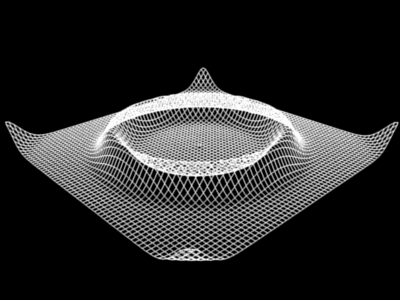
Physics is a subject that seeks to explain the natural world through fundamental laws and mathematical models. While it's one of the most fascinating sciences, many school students find certain areas of physics particularly difficult. This struggle is often due to the abstract nature of concepts, the need for strong mathematical foundations, and the ability to apply theory to real-world problems.
This article dives into three of the most commonly challenging topics for students in school-level physics:
- Newton's Laws of Motion
- Electric Circuits
- Waves and Sound
1. Newton's Laws of Motion
What They Are
Sir Isaac Newton's three laws of motion form the foundation of classical mechanics. These laws describe how objects move in response to forces.
- First Law (Law of Inertia): An object at rest stays at rest and an object in motion stays in motion unless acted upon by an external force.
- Second Law: The force acting on an object is equal to the mass of the object multiplied by its acceleration (
F = ma). - Third Law: For every action, there is an equal and opposite reaction.
Why Students Struggle
- Abstract Concepts: Everyday experiences often contradict Newton's first law due to friction.
- Mathematical Demands: The second law involves algebra, vectors, and units.
- Misconceptions: The third law confuses students because the action and reaction forces act on different objects.
Making It Easier
- Use real-life examples like pushing a cart or playing sports.
- Visual demonstrations such as air tracks can help illustrate motion.
- Use group discussions and free-body diagrams.
2. Electric Circuits
What They Are
Electric circuits allow current to flow through components like resistors and bulbs. Key quantities include:
- Voltage (V): The potential difference that drives current.
- Current (I): The rate of flow of electric charge.
- Resistance (R): Opposition to current.
These are related by Ohm's Law: V = IR
Types of Circuits
- Series Circuits: One path for current; same current flows through all components.
- Parallel Circuits: Multiple paths; voltage is the same across branches.
Why Students Struggle
- Electricity is invisible, making it abstract.
- Misunderstanding of current flow and energy use.
- Difficulty interpreting circuit diagrams.
- Confusion between rules for series and parallel circuits.
Making It Easier
- Use hands-on circuit kits.
- Interactive simulations like PhET.
- Analogies such as water flow in pipes help explain concepts.
3. Waves and Sound
What They Are
Waves transfer energy without transferring matter. Key properties include:
- Wavelength (λ): Distance between successive crests or troughs.
- Frequency (f): Number of waves per second.
- Amplitude: Height of the wave.
- Speed (v): Given by the equation
v = fλ.
Sound is a longitudinal wave where particles oscillate parallel to wave motion.
Why Students Struggle
- Wave behavior (like interference and diffraction) is hard to visualize.
- Sound properties like pitch and loudness are often confused.
- Math and unit conversions pose challenges.
- Common misconception: Sound can travel in a vacuum.
Making It Easier
- Use slinky toys or ripple tanks to demonstrate wave behavior.
- Connect sound properties to music.
- Interactive simulations to explore variables like frequency and amplitude.
Common Struggles Across All Topics
- Lack of conceptual understanding: Memorizing formulas without context.
- Poor math skills: Weak algebra and unit handling affect problem-solving.
- Everyday misconceptions: Beliefs from life experience contradict physics.
- Insufficient practice: Physics requires consistent problem-solving.
Tips for Students
- Break problems into steps and understand concepts first.
- Use diagrams and visual aids.
- Study with peers to reinforce learning.
- Ask questions early to clear doubts.
- Use online tools and simulations.
Tips for Teachers
- Relate topics to students' lives.
- Include hands-on experiments in lessons.
- Identify misconceptions with quick quizzes or polls.
- Use videos and simulations for abstract concepts.
- Promote inquiry-based, student-led activities.
Conclusion
Physics doesn't have to be intimidating. While Newton's Laws of Motion, Electric Circuits, and Waves and Sound are often challenging, these topics can become enjoyable and engaging when approached with the right strategies. By combining conceptual teaching, practical demonstrations, and student-centered learning, educators and learners can transform these "difficult" topics into gateways for scientific curiosity and understanding.
You can learn these concepts and more at Dr Hock's maths and physics tuition.